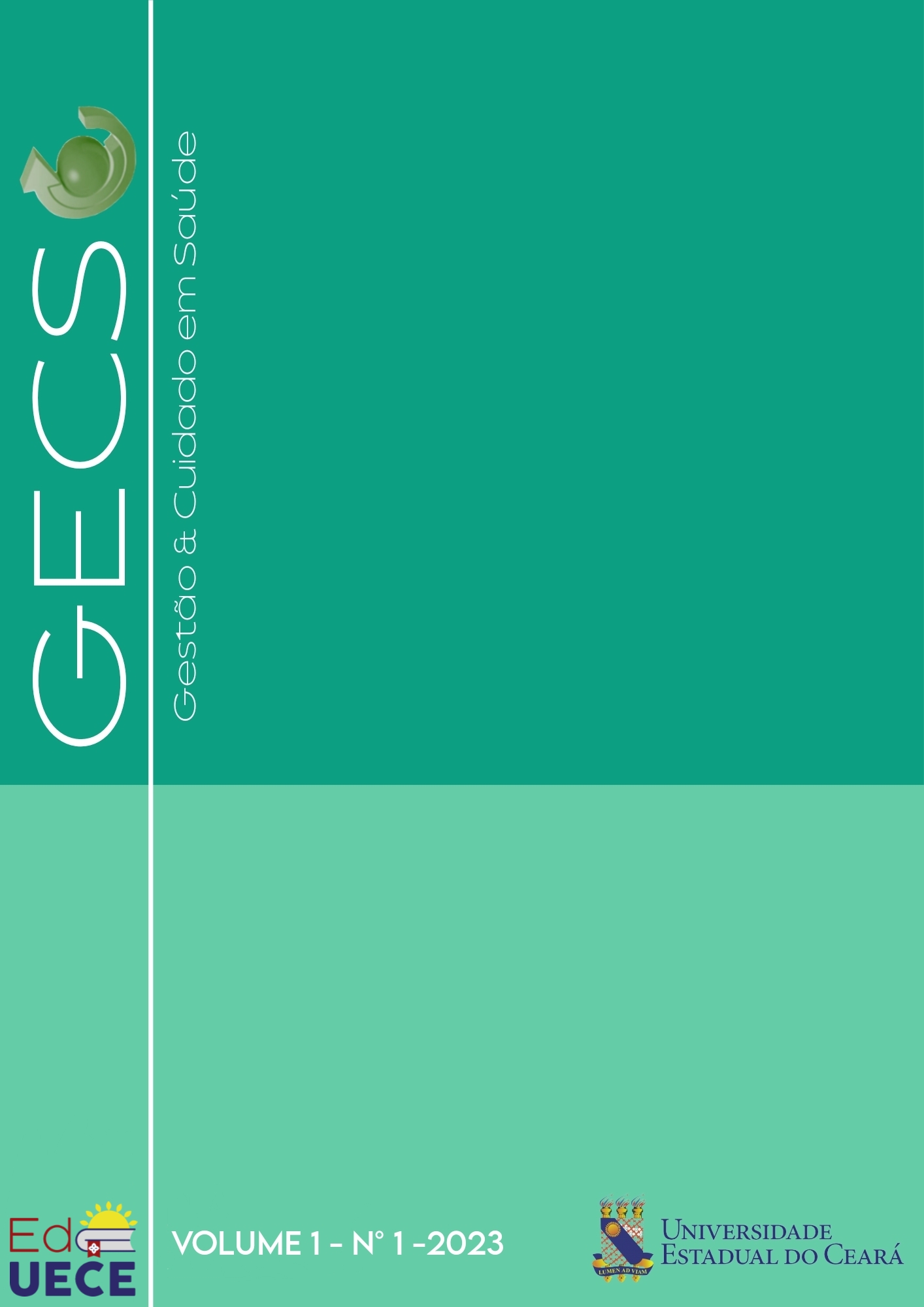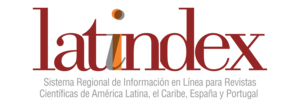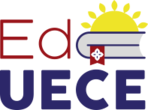Reflections about the health literacy for home enteral nutritional therapy
DOI:
https://doi.org/10.70368/gecs.v1i1.11210Keywords:
Enteral nutrition, Caregivers, Health literacyAbstract
The study reflects about the use of the foundations of Health Literacy in the guidance of caregivers of patients in Home Enteral Nutritional Therapy. It’s a Descriptive study, experience report type. The guidance protocol adopted for caregivers was addressed according to the foundations of Health Literacy, regarding the development of educational materials. It was observed that 41.2% of topics from the Health Literacy fundamentals were not attended. The main inadequacies refer to verbal and written communication, in the absence of the teach-back strategy, as well as the texts demanded more years of schooling than recommended, with excessive instructions, hindering understanding and learning. The experience in verbal and written communication, thus, it is essential that these flaws are corrected for the proper operationalization of Home Enteral Nutritional Therapy.
References
ABIANEH, N. A.; ZARGAR, S. A.; AMIRKHANI, A.; ADELIPOURAMLASH, A. The effect of selfcare education through teach back method on the quality of life in hemodialysis patients. Néphrologie & Thérapeutique, [s. l.], v. 1, n. 6, p. 1-8, 2020. Disponível em: https://doi.org/10.1016/j.nephro.2020.01.002. DOI: https://doi.org/10.1016/j.nephro.2020.01.002
ABRAMS, M. A.; RITA, S.; NIELSEN, G.A. Always use Teach-back!: Toolking, 2012. Disponível em: http://www.teachbacktraining.org/.
BICALHO, C. S.; LACERDA, M. R.; CATAFESTA, F. Refletindo sobre quem é o cuidador familiar [Reflecting about who is the family caregiver]. Cogitare, [s. l.], v. 13, n. 1, p. 118-23, 2008. Disponível em: http://dx.doi.org/10.5380/ce.v13i1.11972. DOI: https://doi.org/10.5380/ce.v13i1.11972
BIFULCO, V. A.; LEVITES, M. The Importance of the Caregiver in the Follow-up of Chronic Patients with Alzheimer's Disease. Archivos en Medicina Familiar, [s. l.], v. 20, n. 4, p. 167-71, 2018. Disponível em: https://www.medigraphic.com/pdfs/medfam/amf-2018/amf184c.pdf.
BRASIL. Caderno de atenção domiciliar, cuidados em terapia nutricional [Home care notebook, care in nutritional therapy]. Brasília: Ministério da Saúde, 2014. Disponível em: http://189.28.128.100/dab/docs/portaldab/publicacoes/caderno_atencao_domiciliar_vol3.pdf.
BRAZILIAN SOCIETY OF PARENTERAL AND ENTERAL NUTRITION. Diretriz Brasileira de Terapia Nutricional Domiciliar [Brazilian Guidelines on Home Nutritional Therapy]. BRASPEN J, São Paulo, v. 33, n. 1, p. 37-46, 2018. Disponível em: https://f9fcfefb-80c1-466a-835e5c8f59fe2014.filesusr.com/ugd/a8daef_695255f33d114cdfba48b437486232e7.pdf.
CUTCHMA, G.; EURICH, M. C. M.; THIEME, R. D.; FRANÇA, R. M.; SCHIEFERDECKER, M. E. M. Nutrition formulas: influence on nutritional condition, clinical condition and complications in household nutrition therapy. Nutr Clín Diet Hosp, [s. l.], v. 36, n. 2, p. 45-54, 2016. Disponível em: https://revista.nutricion.org/PDF/cutchma.pdf.
GRIFFIS, H. M.; KILARU, A. S.; WERNER, R. M.; ASCH, D. A.; HERSHEY, J. C.; HILL, S.; HA, Y. P.; SELLERS, A.; MAHONEY, K.; MERCHANT, R. M. Use of social media across US hospitals: descriptive analysis of adoption and utilization. J Med Internet Res, [s. l.], v. 16, n. 11, p. 1-11, 2014. Disponível em: https://doi.org/10.2196/jmir.3758. DOI: https://doi.org/10.2196/jmir.3758
JAMAL, A.; KHAN, S. A.; ALHUMUD, A.; AL-DYHYYIM, A.; ALRASHED, M.; SHABR, F. B.; ALTERAIF, A.; ALMUZIRI, A.; HOUSEH, M.; QURESHI, R. Association of online health information-seeking behavior and self-care activities among type 2 diabetic patients in Saudi Arabia. J Med Internet Res, [s. l.], v. 17, n. 8, p. 196-208, 2015. Disponível em: https://doi.org/10.2196/jmir.4312. DOI: https://doi.org/10.2196/jmir.4312
KIRSCH, I. S.; JUNGEBLUT, A.; JENKINS, L. B.; KOLSTAD, A. Adult literacy in America: a first look at the results of the National Adult Literacy Survey. Washington: US Government Printing Office, 1993.
KNUPPEL, M. A. C. Webséries como objetos educacionais na cultura digital: multimodalidade e multiletramentos [Webseries as educational objects in digital culture: multimodality and multiliteracies]. Em Rede - Revista de Educação a Distância, [s. l.], v. 6, n. 1, p. 86-102, 2019. Disponível em: https://www.aunirede.org.br/revista/index.php/emrede/article/view/442.
MACHADO, B. M. M.; DAHDAH, D. F.; KEBBE, L. M. Caregivers of family members with chronic diseases: coping strategies used in everyday life. Cad Bras Ter Ocup, [s. l.], v. 6, n. 2, p. 299-313, 2018. Disponível em: https://www.semanticscholar.org/paper/Cuidadores-de-familiares-com-doen%C3%A7as-cr%C3%B4nicas%3A-de-Machado-Dahdah/3c21ae20bf311b2eee60c7ad16fe5374a198fdac.
MARQUES, S. R. L.; LEMOS, S. M. A. Health literacy assessment instruments: literature review. Audiol Commun Res, [s. l.], v. 22, n. 1, p. 1757-65, 2017. Disponível em: http://doi.org/10.1590/2317-6431-2016-1757. DOI: https://doi.org/10.1590/2317-6431-2016-1757
National Academies of Sciences, Engineering and Medicine. The promises and perils of digital strategies in achieving health equity: workshop summary. Washington: The National Academies Press, 2016. Disponível em: https://www.nap.edu/read/23439/chapter/1.
OSBORNE, H. Health literacy from A to Z: pratical ways to communicate your health message. (2nd ed.) Burlington: Jones & Bartlett Learning, 2013.
PINTÃO, D. Brasil só perde para os EUA em tempo de visualização de vídeos on-line. [Brazil is second only to the US in viewing time for online videos]. São Paulo: Folha de São Paulo, 2019. Disponível em: http://temas.folha.uol.com.br/influenciadores-digitais/a-fama/brasil-so-perde-para-os-eua-emtempo-de-visualizacao-de-videos-on-line.shtml.
RAMOS, L.; PEREIRA, A. C.; SILVA, M. A. D. Video as complementary teaching tool in health courses. Journal of Health Informatics, [s. l.], v. 11, n. 2, p. 35-9, 2019. Disponível em: http://www.jhi-sbis.saude.ws/ojsjhi/index.php/jhi-sbis/article/view/601/355.
SOCIEDADE BRASILEIRA DE CARDIOLOGIA. Usando o método teach-back [Using the teach-back method]. Rio de Janeiro: SBC Advisory Board, 2020. Disponível em: http://cardiol.br/boaspraticasclinicas/ferramentas/dica/usando-metodo-teach-back.pdf.
SORENSEN, K. Defining health literacy: Exploring differences and commonalities. In O. Okan, U. Bauer, P. Pinheiro, K. Sorensen & D. Levin. International handbook of health literacy: research, practice and policy across the lifespan (pp. 5-20). Bristol: Policy Press, 2019. DOI: https://doi.org/10.56687/9781447344520-004
SORENSEN, K.; BROUCKE, S. V.; FULLMAN, J.; DOYLE, G.; PELIKAN, J.; SLONSKA, Z.; BRAND, H.; (HLS-EU) CONSORTIUM HEALTH LITERACY PROJECT EUROPEAN. Health literacy and public health: a systematic review and integration of definitions and models. BMC Public Health, [s. l.], v. 12, n. 80, p. 1-13, 2012. Disponível em: https://bmcpublichealth.biomedcentral.com/articles/10.1186/1471-2458-12-80. DOI: https://doi.org/10.1186/1471-2458-12-80
TACKETT, S.; SLINN, K.; MARSHALL, T.; GAGLANI, S.; WALDMAN, V.; DESAI, R. Medical education videos for the world: an analysis of viewing patterns for a YouTube channel. Academic Medicine, [s. l.], v. 93, n. 8, p. 1150-6, 2018. Disponível em: https://pubmed.ncbi.nlm.nih.gov/29298180/. DOI: https://doi.org/10.1097/ACM.0000000000002118
VASCONCELOS, C. M. C. S.; PARENTE, N. A.; SAMPAIO, H. A. C. A relevância da comunicação oral, escrita e digital: usuário-profissional de saúde-SUS [The relevance of oral, written and digital communication: user-health professional-SUS]. In M. P. B. Passamai, H. A. C. Sampaio & E. M. V. Henriques. Letramento funcional em saúde: as habilidades do usuário e o Sistema Único de Saúde (p. 79-101). Curitiba: CRV, 2019.
VASCONCELOS, C. M. C. S.; SAMPAIO, H. A. C.; VERGARA, C. M. A. C. Materiais educativos para prevenção e controle de doenças crônicas: uma avaliação à luz dos pressupostos do letramento em saúde [Educational materials for the prevention and control of chronic diseases: an evaluation in the light of health literacy assumptions]. Curitiba: CRV, 2018.
ZARCADOOLAS, C.; PLEASANT, A. F.; GREER, D. S. Advancing health literacy: a framework for understanding and action. San Francisco: Jossey-Bass, 2006.
Downloads
Published
How to Cite
License
Copyright (c) 2023 https://docs.google.com/document/d/1EIuWRbf6QmyfsDn2_jSvPNG28j8oyeH2ixVaT6s7Ybg/edit

This work is licensed under a Creative Commons Attribution-NonCommercial 4.0 International License.













